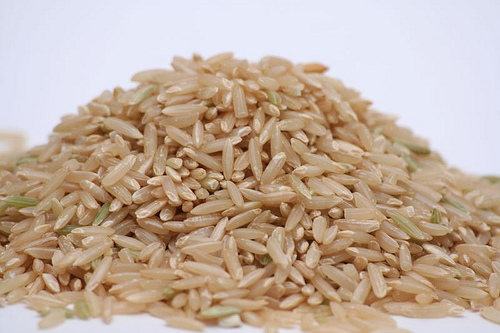Brown rice vs. white rice

There is a lot of confusion about the various differences between brown rice and white rice. They all boil down to the fact that white rice is brown rice that has been stripped of its "jacket." And the jacket is where all the nutrition is.
This is the outer layer of the rice, the hull, which is technically two layers: The bran and the germ. To make white rice, the germ is buffed or polished off. This extra effort means that white rice is more expensive, which is why in Asian cultures brown rice is associated with poverty and the working class.
In addition to containing a lot of fiber and protein, the bran and germ layers of rice also hold most of the nutrients. This is why brown rice is considered a nutritious whole grain, whereas white rice is nutritionally bereft. Brown rice also has a lower glycemic index: only 55, compared to a glycemic index of 65 for white rice.
Brown rice is an excellent source of many nutrients. It is particularly notable for its magnesium content. Magnesium is a difficult element to get enough of from dietary sources, but one cup of cooked brown rice contains a whopping 84 mg. (The same amount of white rice contains only 19mg of magnesium.)
Brown rice can also be more of a challenge to cook compared to white rice. Brown rice should never be rinsed before cooking, as rinsing washes away some of the nutritional benefit. A rice cooker is the best way to cook brown rice, since it takes care of everything for you. When cooking brown rice on the stovetop, the best way to go is to follow the cooking instructions, then let it sit off the heat with the lid on for an extra 10-15 minutes. This extra step helps the rice soak up all the water and soften it.
Image courtesy Flickr/Rob Qld

0 comments